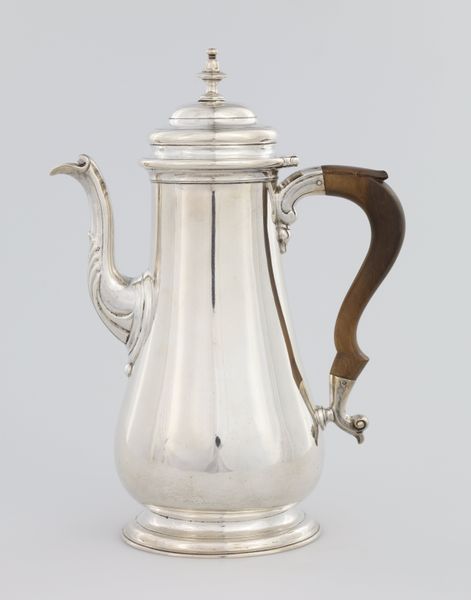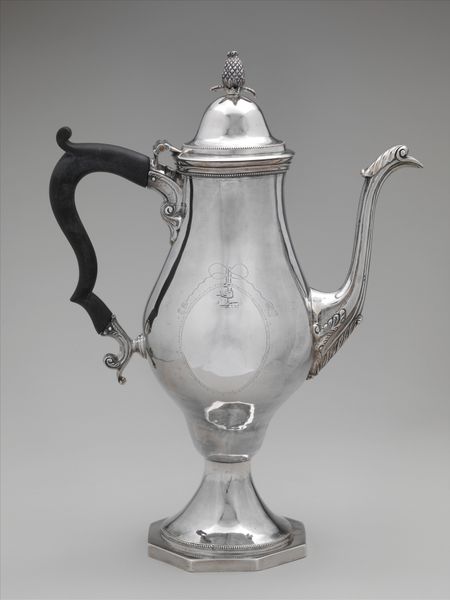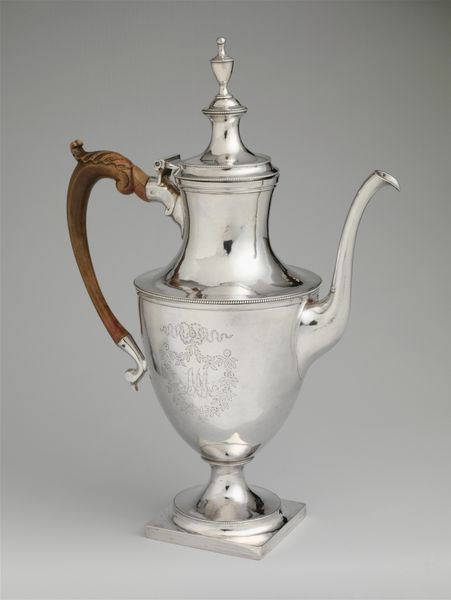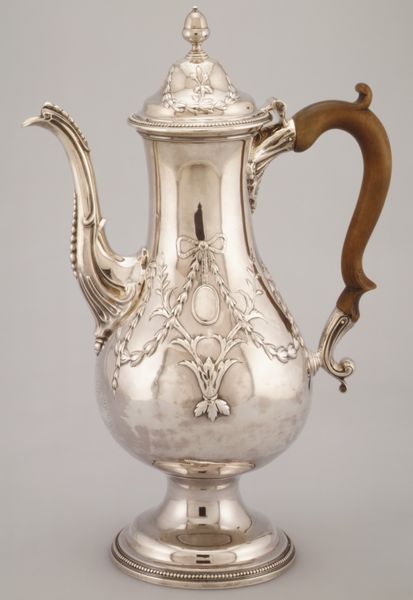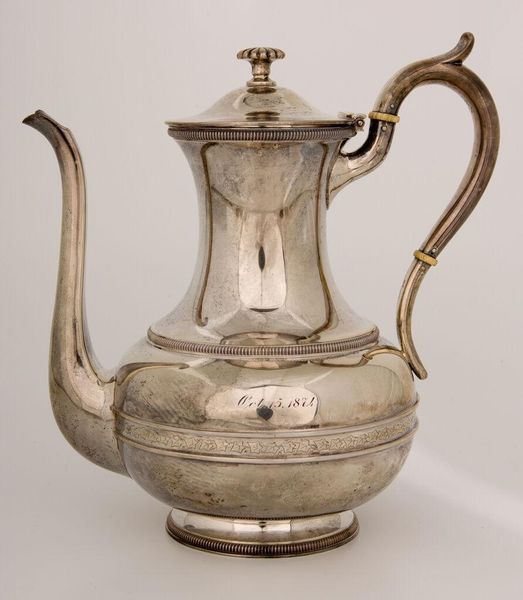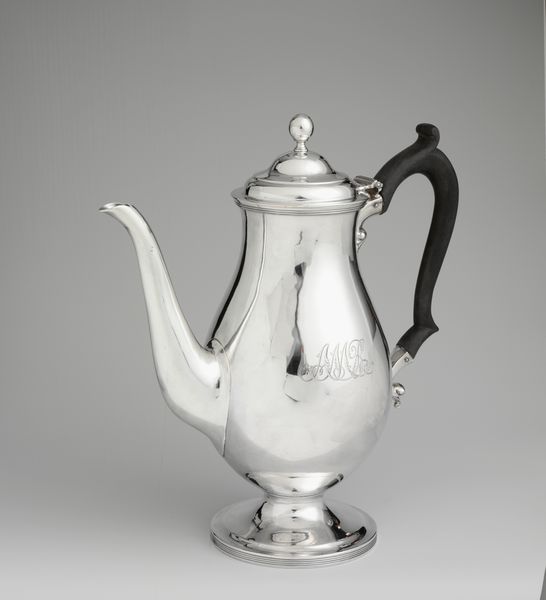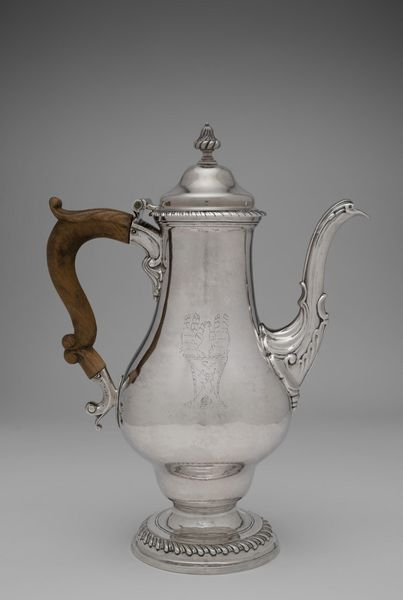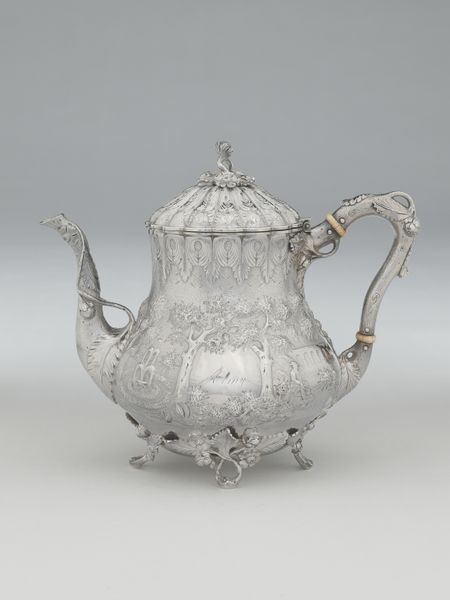
Dimensions: 12 7/8 x 10 3/4 x 5 3/4 in. (32.7 x 27.31 x 14.61 cm)
Copyright: Public Domain
This Coffeepot was crafted by Benjamin Burt, an American silversmith, sometime in the 18th century. Note the coat of arms engraved on its side. In heraldry, such symbols were not mere decoration; they declared lineage and status. The lion motif, for example, has ancient roots, symbolizing courage and nobility. Think of the Lion Gate of Mycenae, a testament to power and protection, or the lionhearted heroes of medieval lore. The adaptation of such symbols onto everyday objects like this coffeepot speaks to a culture deeply invested in tradition and ancestry. The image is not static; it evolves. The lion, once roaring on battlefields, now graces a vessel for morning coffee. Perhaps this domestication is but a reminder that even the most potent symbols can be reshaped and reimagined across time.
Comments
minneapolisinstituteofart almost 2 years ago
⋮
Of the many pieces of silver purchased by James Ford Bell with an eye to their donation to the Institute, this coffeepot is noteworthy for its provenance and the circumstances surrounding its sale. Having been given at the turn of the twentieth century to the President of Harvard University, Charles William Eliot, he in turn sold it in 1917 to raise funds for building a summer cottage on a property at Northeast Harbor on the coast of Maine. Out of deference to the source of the funding, the cottage has been called ever since "Coffeepot."
Join the conversation
Join millions of artists and users on Artera today and experience the ultimate creative platform.
